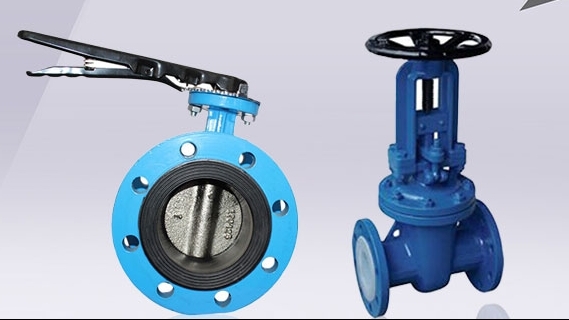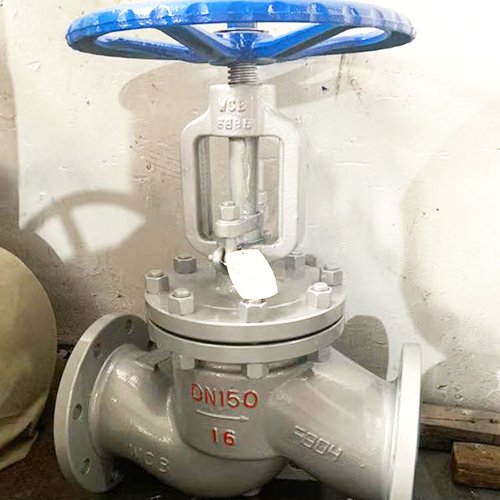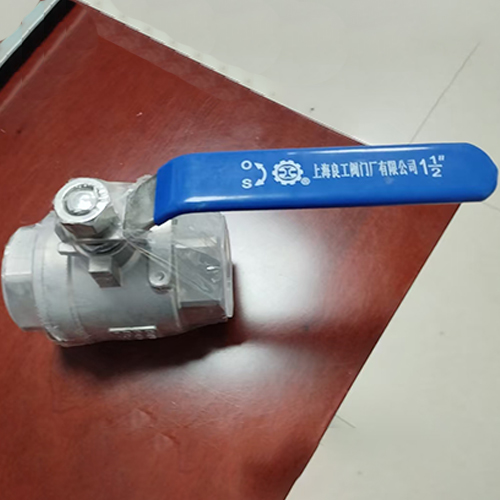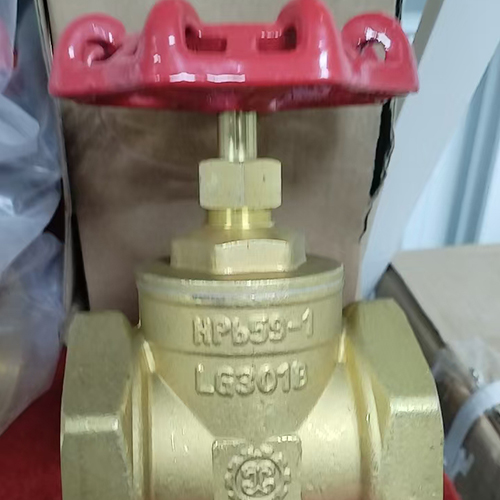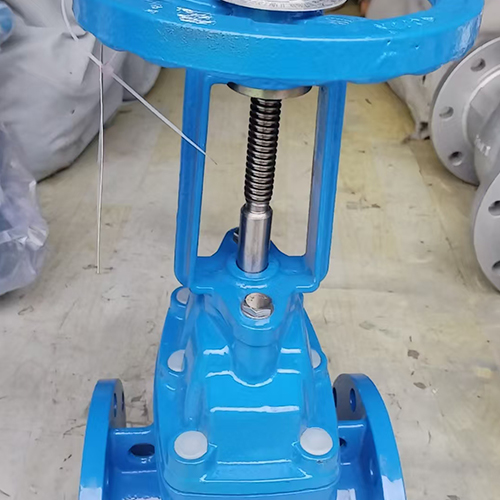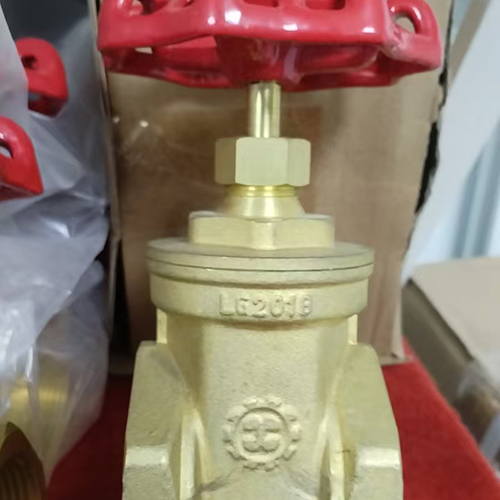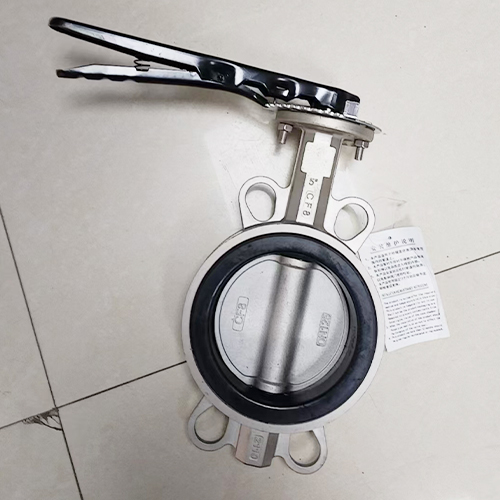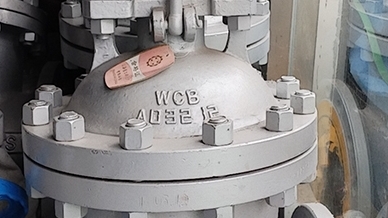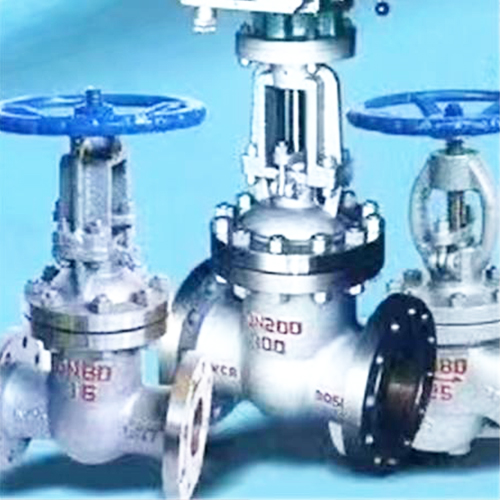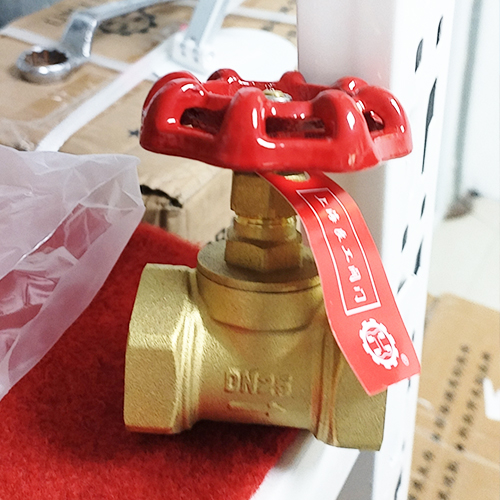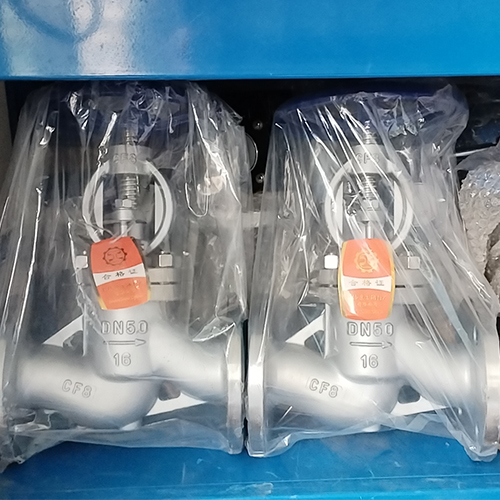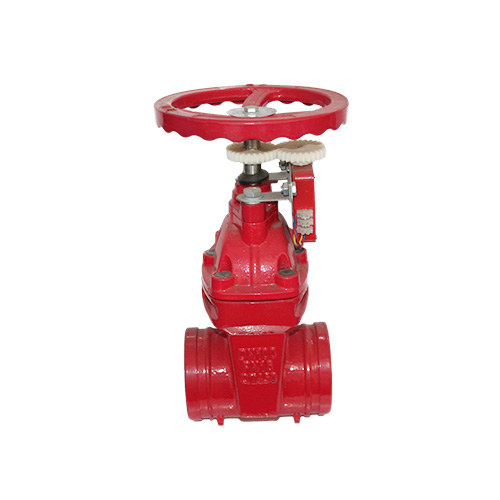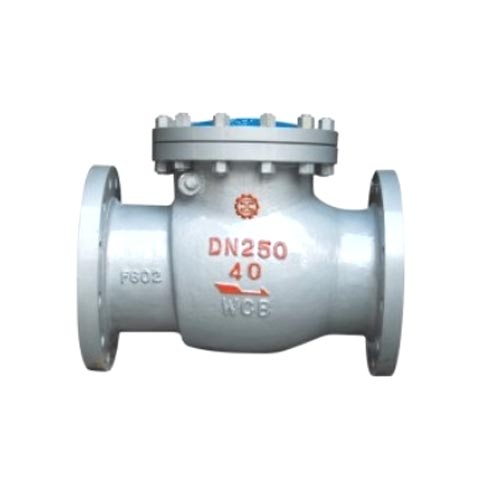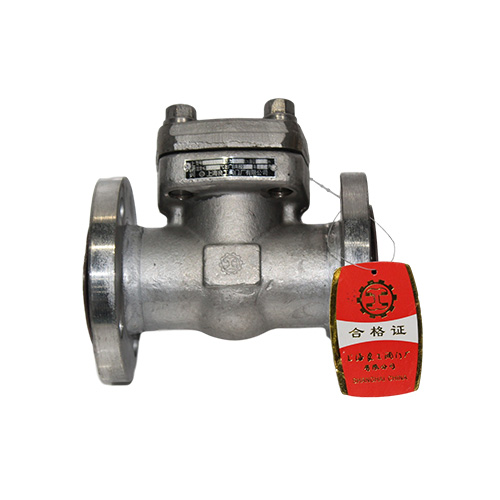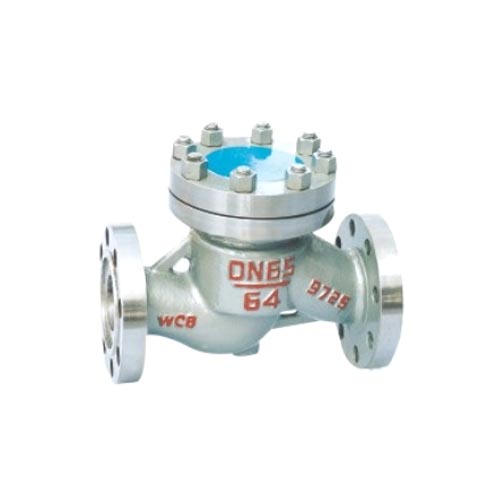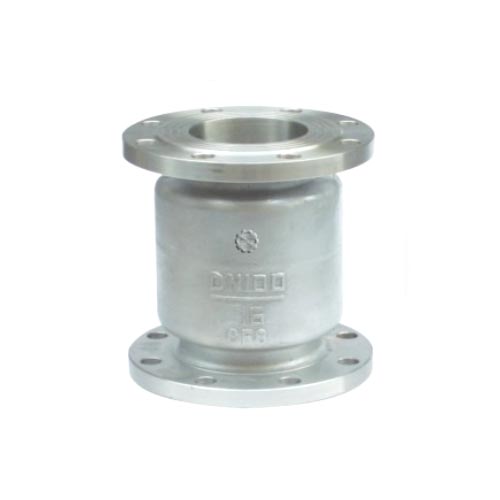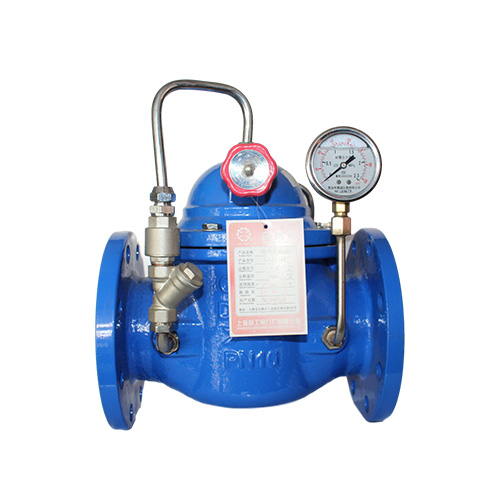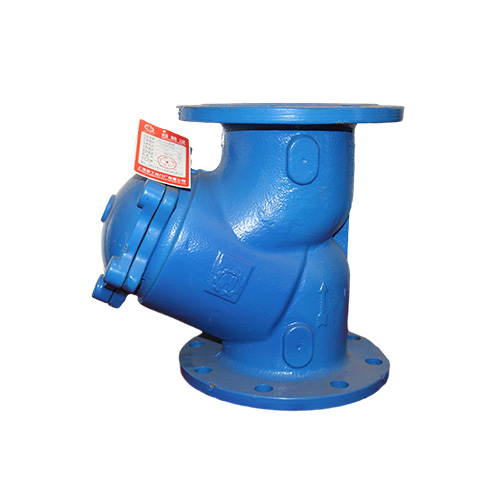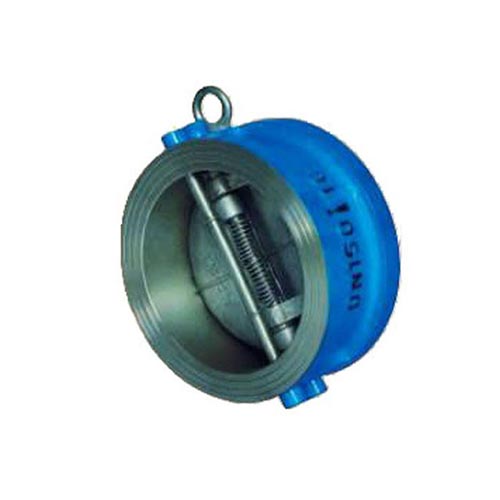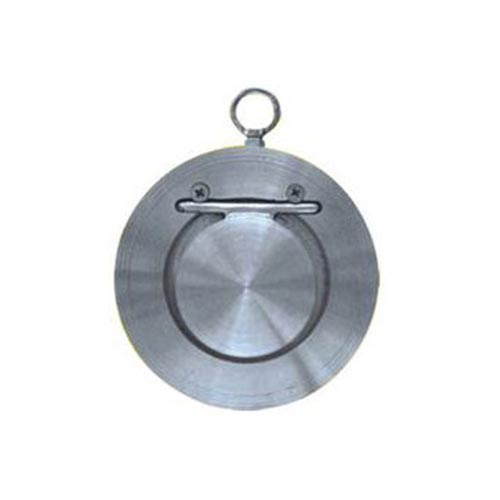在流体管道系统中,阀门是控制元件,其主要作用是隔离设备和管道系统、调节流量、防止回流、调节和排泄压力。阀门可用于控制空气、水、蒸汽、各种腐蚀性介质、泥浆、油品、液态金属和放射性介质等各种类型流体的流动。由于管道系统选择最适合的阀门显得非常重要,所以,了解阀门的特性及选择阀门的步骤和依据也变得至关重要起来。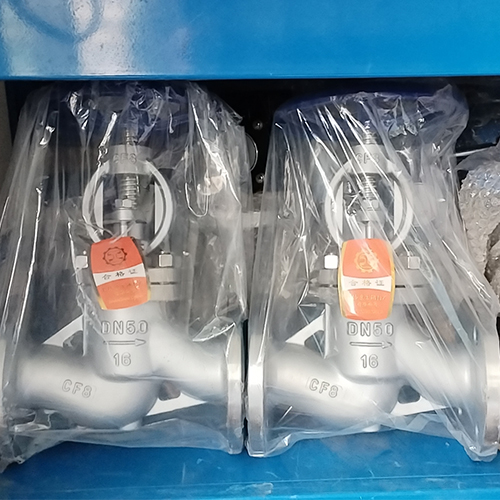
In fluid pipeline systems, valves are control components whose main functions are to isolate equipment and pipeline systems, regulate flow, prevent backflow, and regulate and discharge pressure. Valves can be used to control the flow of various types of fluids such as air, water, steam, various corrosive media, mud, oil, liquid metals, and radioactive media. Due to the importance of selecting the most suitable valve for pipeline systems, understanding the characteristics of valves and the steps and criteria for selecting valves have become crucial.
阀门的分类一、阀门总的可分两大类:第一类自动阀门:依靠介质(液体、气体)本身的能力而自行动作的阀门。如止回阀、安全阀、调节阀、疏水阀、减压阀等。第二类驱动阀门:借助手动、电动、液动、气动来操纵动作的阀门。如闸阀,截止阀、节流阀、蝶阀、球阀、旋塞阀等。
Classification of Valves 1. Valves can generally be divided into two categories: the first category is automatic valves: valves that operate independently based on the ability of the medium (liquid, gas) itself. Such as check valves, safety valves, regulating valves, drain valves, pressure reducing valves, etc. The second type of driven valve: a valve that is operated manually, electrically, hydraulically, or pneumatically. Such as gate valves, globe valves, throttle valves, butterfly valves, ball valves, plug valves, etc.
二、按结构特征,根据关闭件相对于阀座移动的方向可分:
2、 According to the structural characteristics, it can be divided into:
1.截门形:关闭件沿着阀座中心移动;
1. Truncated shape: The closing component moves along the center of the valve seat;
2.闸门形:关闭件沿着垂直阀座中心移动;
2. Gate shaped: The closing component moves along the center of the vertical valve seat;
3.旋塞和球形:关闭件是柱塞或球,围绕本身的中心线旋转;
3. Plug and ball: The closing component is a plunger or ball that rotates around its own centerline;
4.旋启形:关闭件围绕阀座外的轴旋转;
4. Swing shape: The closing component rotates around the axis outside the valve seat;
5.碟形:关闭件的圆盘,围绕阀座内的轴旋转;
5. Disc shape: a circular disc of a closure that rotates around the axis inside the valve seat;
6.滑阀形:关闭件在垂直于通道的方向滑动。
6. Sliding valve shape: The closing element slides in a direction perpendicular to the channel.
三、按用途,根据阀门的不同用途可分:
3、 According to their different purposes, valves can be divided into:
1.开断用:用来接通或切断管路介质,如截止阀、闸阀、球阀、蝶阀等。
1. Disconnecting function: used to connect or cut off pipeline media, such as globe valves, gate valves, ball valves, butterfly valves, etc.
2.止回用:用来防止介质倒流,如止回阀。
2. Check valve: used to prevent medium backflow, such as a check valve.
3.调节用:用来调节介质的压力和流量,如调节阀、减压阀。
3. Regulating: Used to regulate the pressure and flow rate of the medium, such as regulating valves and pressure reducing valves.
4.分配用:用来改变介质流向、分配介质,如三通旋塞、分配阀、滑阀等。
4. Distribution: Used to change the flow direction and distribute media, such as three-way plugs, distribution valves, slide valves, etc.
5.安全阀:在介质压力超过规定值时,用来排放多余的介质,保证管路系统及设备安全,如安全阀、事故阀。
5. Safety valve: Used to discharge excess medium when the medium pressure exceeds the specified value, ensuring the safety of pipeline systems and equipment, such as safety valves and emergency valves.
6.其他特殊用途:如疏水阀、放空阀、排污阀等。
6. Other special purposes: such as drain valves, vent valves, drain valves, etc.
四、按驱动方式,根据不同的驱动方式可分:
4、 According to the driving method, it can be divided into:
1.手动:借助手轮、手柄、杠杆或链轮等,有人力驱动,传动较大力矩时装有蜗轮、齿轮等减速装置。
1. Manual: With the help of a handwheel, handle, lever, or sprocket, it is manually driven and equipped with reduction devices such as worm gears and gears when transmitting large torque.
2.电动:借助电机或其他电气装置来驱动。
2. Electric: driven by a motor or other electrical device.
3.液动:借助(水、油)来驱动。
3. Hydraulic: driven by (water, oil).
4.气动:借助压缩空气来驱动。
4. Pneumatic: driven by compressed air.
五、按压力,根据阀门的公称压力可分:
5、 According to the nominal pressure of the valve, it can be divided into:
1.真空阀:绝对压力<0.1Mpa 即 760mm 汞柱高的阀门,通常用 mm 汞柱或mm水柱表示压力。
1. Vacuum valve: A valve with an absolute pressure<0.1Mpa, which is 760mm mercury column high, usually expressed in mm mercury column or mm water column to indicate pressure.
2.低压阀:公称压力 PN≤1.6Mpa 的阀门(包括 PN≤1.6MPa 的钢阀)
2. Low pressure valve: valves with nominal pressure PN ≤ 1.6Mpa (including steel valves with PN ≤ 1.6MPa)
3.中压阀:公称压力 PN2.5—6.4MPa 的阀门。
3. Medium pressure valve: a valve with a nominal pressure of PN2.5-6.4MPa.
4.高压阀:公称压力 PN10.0—80.0MPa 的阀门。5.超高压阀:公称压力 PN≥100.0MPa 的阀门。
4. High pressure valve: a valve with a nominal pressure of PN10.0-80.0MPa. 5. Ultra high pressure valve: a valve with a nominal pressure PN ≥ 100.0MPa.
六、按介质的温度分,根据阀门工作时的介质温度可分:
6、 According to the temperature of the medium, it can be divided into:
1.普通阀门:适用于介质温度-40℃~425℃的阀门。
1. Ordinary valve: suitable for valves with medium temperatures ranging from -40 ℃ to 425 ℃.
2.高温阀门:适用于介质温度 425℃~600℃的阀门。
2. High temperature valve: suitable for valves with medium temperatures ranging from 425 ℃ to 600 ℃.
3.耐热阀门:适用于介质温度 600℃以上的阀门。
3. Heat resistant valve: Suitable for valves with medium temperatures above 600 ℃.
4.低温阀门:适用于介质温度-150℃~ -40℃的阀门。
4. Low temperature valve: Suitable for valves with medium temperatures ranging from -150 ℃ to -40 ℃.
5.超低温阀门:适用于介质温度-150℃以下的阀门。
5. Ultra low temperature valve: suitable for valves with medium temperatures below -150 ℃.
七、按公称通径分,根据阀门的公称通径可分:
7、 According to the nominal diameter, valves can be divided into:
1.小口径阀门:公称通径 DN<40mm 的阀门。
1. Small caliber valves: valves with a nominal diameter of DN<40mm.
2.中口径阀门:公称通径 DN50~300mm 的阀门。
2. Medium caliber valves: valves with a nominal diameter of DN50-300mm.
3.大口径阀门:公称通径 DN350~1200mm 的阀门。
3. Large caliber valves: valves with a nominal diameter of DN350-1200mm.
4.特大口径阀门:公称通径 DN≥1400mm 的阀门。
4. Extra large caliber valves: valves with a nominal diameter DN ≥ 1400mm.
八、按与管道连接方式分,根据阀门与管道连接方式可分:
8、 According to the connection method with the pipeline, it can be divided into:
1.法兰连接阀门:阀体带有法兰,与管道采用法兰连接的阀门。
1. Flange connected valve: The valve body is equipped with a flange and is connected to the pipeline using a flange.
2.螺纹连接阀门:阀体带有内螺纹或外螺纹,与管道采用螺纹连接的阀门。
2. Threaded connection valve: The valve body has internal or external threads and is connected to the pipeline using threads.
3.焊接连接阀门:阀体带有焊口,与管道采用焊接连接的阀门。
3. Welded connection valve: The valve body has a welded joint and is connected to the pipeline by welding.
4.夹箍连接阀门:阀体上带有夹口,与管道采用夹箍连接的阀门。
4. Clamp connected valve: The valve body has a clamp mouth and is connected to the pipeline using clamps.
5.卡套连接阀门:采用卡套与管道连接的阀门。
5. Card sleeve connected valve: a valve that uses a card sleeve to connect to the pipeline.
阀门的特性阀门的特性一般有两种,使用特性和结构特性。使用特性:它确定了阀门的主要使用性能和使用范围,属于阀门使用特性的有:阀门的类别(闭路阀门、调节阀门、安全阀门等);产品类型(闸阀、截止阀、蝶阀、球阀等);阀门主要零件(阀体、阀盖、阀杆、阀瓣、密封面)的材料;阀门传动方式等。结构特性:它确定了阀门的安装、维修、保养等方法的一些结构特性,属于结构特性的有:阀门的结构长度和总体高度、与管道的连接形式(法兰连接、螺纹连接、夹箍连接、外螺纹连接、焊接端连接等);密封面的形式(镶圈、螺纹圈、堆焊、喷焊、阀体本体);阀杆结构形式(旋转杆、升降杆)等。
The characteristics of valves generally have two types: usage characteristics and structural characteristics. Usage characteristics: It determines the main performance and scope of use of the valve. Valve usage characteristics include: valve category (closed circuit valve, regulating valve, safety valve, etc.); Product type (gate valve, globe valve, butterfly valve, ball valve, etc.); The materials of the main components of the valve (valve body, valve cover, valve stem, valve disc, sealing surface); Valve transmission mode, etc. Structural characteristics: It determines some structural characteristics of the installation, maintenance, and upkeep methods of the valve, including the structural length and overall height of the valve, and the connection form with the pipeline (flange connection, threaded connection, clamp connection, external threaded connection, welded end connection, etc.); Form of sealing surface (insert ring, threaded ring, overlay welding, spray welding, valve body); Valve stem structure forms (rotating rod, lifting rod), etc.
选择阀门的步骤和依据选择步骤:
Steps and criteria for selecting valves:
1、明确阀门在设备或装置中的用途,确定阀门的工作条件:适用介质、工作压力、工作温度等等。
1. Clarify the purpose of the valve in the equipment or device, determine the working conditions of the valve: applicable medium, working pressure, working temperature, etc.
2、确定与阀门连接管道的公称通径和连接方式:法兰、螺纹、焊接等。
2. Determine the nominal diameter and connection method of the pipeline connected to the valve: flange, thread, welding, etc.
3、确定操作阀门的方式:手动、电动、电磁、气动或液动、电气联动或电液联动等。
3. Determine the method of operating the valve: manual, electric, electromagnetic, pneumatic or hydraulic, electrical linkage or electro-hydraulic linkage, etc.
4、根据管线输送的介质、工作压力、工作温度确定所选阀门的壳体和内件的材料:灰铸铁、可锻铸铁、球墨铸铁、碳素钢、合金钢、不锈耐酸钢、铜合金等。
4. Determine the materials for the shell and internal components of the selected valve based on the medium transported by the pipeline, working pressure, and working temperature: gray cast iron, malleable cast iron, ductile iron, carbon steel, alloy steel, stainless acid resistant steel, copper alloy, etc.
5、选择阀门的种类:闭路阀门、调节阀门、安全阀门等。
5. Choose the type of valve: closed-circuit valve, regulating valve, safety valve, etc.
6、确定阀门的型式:闸阀、截止阀、球阀、蝶阀、节流阀、安全阀、减压阀、蒸汽疏水阀等。
6. Determine the type of valve: gate valve, globe valve, ball valve, butterfly valve, throttle valve, safety valve, pressure reducing valve, steam trap valve, etc.
7、确定阀门的参数:对于自动阀门,根据不同需要先确定允许流阻、排放能力、背压等,再确定管道的公称通径和阀座孔的直径。
7. Determine the parameters of the valve: For automatic valves, determine the allowable flow resistance, discharge capacity, back pressure, etc. according to different needs, and then determine the nominal diameter of the pipeline and the diameter of the valve seat hole.
8、确定所选用阀门的几何参数:结构长度、法兰连接形式及尺寸、开启和关闭后阀门高度方向的尺寸、连接的螺栓孔尺寸和数量、整个阀门外型尺寸等。
8. Determine the geometric parameters of the selected valve: structural length, flange connection form and size, height direction size of the valve after opening and closing, size and quantity of bolt holes for connection, overall dimensions of the valve, etc.
9、利用现有的资料:阀门产品目录、阀门产品样本等选择适当的阀门产品。
9. Use existing materials such as valve product catalogs and valve product samples to select appropriate valve products.
选择阀门的依据:在了解掌握选择阀门步骤的同时,还应进一步了解选择阀门的依据。
Basis for valve selection: While understanding and mastering the steps of valve selection, it is also necessary to further understand the basis for valve selection.
1、所选用阀门的用途、使用工况条件和操纵控制方式。
1. The purpose, operating conditions, and control mode of the selected valve.
2、工作介质的性质:工作压力、工作温度、腐蚀性能,是否含有固体颗粒,介质是否有毒,是否是易燃、易爆介质,介质的黏度等等。
2. The properties of the working medium include working pressure, working temperature, corrosion performance, whether it contains solid particles, whether the medium is toxic, whether it is flammable or explosive, viscosity of the medium, and so on.
3、对阀门流体特性的要求:流阻、排放能力、流量特性、密封等级等等。
3. Requirements for valve fluid characteristics: flow resistance, discharge capacity, flow characteristics, sealing grade, etc.
4、安装尺寸和外形尺寸要求:公称通径、与管道的连接方式和连接尺寸、外形尺寸或重量限制等。
4. Installation dimensions and external dimensions requirements: nominal diameter, connection method and dimensions with the pipeline, external dimensions or weight limitations, etc.
5、对阀门产品的可靠性、使用寿命和电动装置的防爆性能等的附加要求。
5. Additional requirements for the reliability, service life, and explosion-proof performance of valve products and electric devices.
在选定参数时应注意:如果阀门要用于控制目的,必须确定如下额外参数:操作方法、最大和最小流量要求、正常流动的压力降、关闭时的压力降、阀门的最大和最小进口压力。 根据上述选择阀门的依据和步骤,合理、正确地选择阀门时还必须对各种类型阀门的内部结构进行详细了解,以便能对优先选用的阀门做出正确的抉择。管道的最终控制是阀门。阀门启闭件控制着介质在管道内的流束方式,阀门流道的形状使阀门具备一定的流量特性,在选择管道系统最适合安装的阀门时必须考虑到这一点。
When selecting parameters, it should be noted that if the valve is to be used for control purposes, the following additional parameters must be determined: operating method, maximum and minimum flow requirements, pressure drop for normal flow, pressure drop when closing, and maximum and minimum inlet pressure of the valve. According to the above criteria and steps for selecting valves, it is necessary to have a detailed understanding of the internal structure of various types of valves when selecting valves reasonably and correctly, so as to make the correct choice for the preferred valve. The ultimate control of pipelines is valves. The valve opening and closing components control the flow of the medium in the pipeline, and the shape of the valve channel gives the valve certain flow characteristics. This must be taken into account when selecting the most suitable valve for installation in the pipeline system.
选择阀门应遵循的原则1、截止和开放介质用的阀门流道为直通式的阀门,其流阻较小,通常选择作为截止和开放介质用的阀门。向下闭合式阀门(截止阀、柱塞阀)由于其流道曲折,流阻比其他阀门高,故较少选用。在允许有较高流阻的场合,可选用闭合式阀门。
Principles to be followed when selecting valves: 1. Valves used for shut-off and opening media should have straight through flow channels with low flow resistance, and are usually selected as valves for shut-off and opening media. Downward closing valves (globe valves, plunger valves) are less commonly used due to their tortuous flow paths and higher flow resistance compared to other valves. In situations where high flow resistance is allowed, closed valves can be used.
2、控制流量用的阀门通常选择易于调节流量的阀门作为控制流量用。向下闭合式阀门(如截止阀)适于这一用途,因为它的阀座尺寸与关闭件的行程之间成正比关系。旋转式阀门(旋塞阀、蝶阀、球阀)和挠曲阀体式阀门(夹紧阀、隔膜阀)也可用于节流控制,但通常只能在有限的阀门口径范围内适用。闸阀是以圆盘形闸板对圆形阀座口做横切运动,它只有在接近关闭位置时,才能较好地控制流量,故通常不用于流量控制。
2. Valves used for controlling flow are usually chosen to be easy to adjust. A downward closing valve (such as a globe valve) is suitable for this purpose because its seat size is proportional to the stroke of the closing member. Rotary valves (plug valves, butterfly valves, ball valves) and flex valve body valves (clamp valves, diaphragm valves) can also be used for throttling control, but are usually only applicable within a limited range of valve diameters. Gate valve is a disc-shaped gate that performs transverse movement on a circular valve seat. It can only effectively control flow when approaching the closed position, so it is usually not used for flow control.
3、换向分流用的阀门根据换向分流的需要,这种阀门可有三个或更多的通道。旋塞阀和球阀较适用于这一目的,因此,大部分用于换向分流的阀门都选取这类阀门中的一种。但是在有些情况下,其他类型的阀门,只要把两个或更多个阀门适当地相互连接起来,也可作换向分流用。
3. The valve used for directional diversion can have three or more channels according to the needs of directional diversion. Plug valves and ball valves are more suitable for this purpose, therefore, most valves used for directional diversion choose one of these types of valves. However, in some cases, other types of valves can also be used for directional diversion as long as two or more valves are appropriately connected to each other.
4、带有悬浮颗粒的介质用阀门当介质中带有悬浮颗粒时,最适于采用其关闭件沿密封面的滑动带有擦拭作用的阀门。如果关闭件对阀座的来回运动是竖直的,那末就可能夹持颗粒,因此这种阀门除非密封面材料可以允许嵌入颗粒,否则只适用于基本清洁的介质。球阀和旋塞阀在启闭过程中对密封面均有擦拭作用,故适宜用在带有悬浮颗粒的介质中。
4. Valves for media with suspended particles are most suitable when the media contains suspended particles, and valves with sliding closure along the sealing surface and wiping function are most suitable. If the back and forth movement of the closure against the valve seat is vertical, it may clamp particles, so this type of valve is only suitable for basic clean media unless the sealing surface material allows particles to be embedded. Ball valves and plug valves have a wiping effect on the sealing surface during the opening and closing process, making them suitable for use in media with suspended particles.
阀门选型说明
Valve selection instructions
1、闸阀的选型
1. Selection of Gate Valves
一般情况下,应首选闸阀。闸阀除适用于蒸汽、油品等介质外,还适用于含有粒状固体及粘度较大的介质,并适用于放空和低真空系统的阀门。对带有固体颗粒的介质,闸阀阀体上应带有一个或两个吹扫孔。对低温介质,应选用低温专用闸阀。
Generally, gate valves should be preferred. Gate valves are not only suitable for media such as steam and oil, but also for media containing granular solids and high viscosity, and are suitable for valves in venting and low vacuum systems. For media with solid particles, the gate valve body should have one or two blowdown holes. For low-temperature media, low-temperature dedicated gate valves should be selected.
2、 截止阀选型说明
2. Selection instructions for globe valves
截止阀适用于对流体阻力要求不严的管路上,即对压力损失考虑不大,以及高温、高压介质的管路或装置,适用于DN<200mm的蒸汽等介质管道上;小型阀门可选用截止阀,如针形阀、仪表阀、取样阀、压力计阀等;截止阀有流量调节或压力调节,但对调节精度要求不高,而且管路直径又比较小时,宜选用截止阀或节流阀;对于剧毒介质,宜选用波纹管密封的截止阀;但截止阀不宜用于粘度较大的介质和含有颗粒易沉淀的介质,也不宜作放空阀及低真空系统的阀门。
Globe valves are suitable for pipelines that do not have strict requirements for fluid resistance, that is, pipelines or devices that do not consider pressure loss, as well as high-temperature and high-pressure media. They are suitable for steam and other media pipelines with DN<200mm; Small valves can use globe valves, such as needle valves, instrument valves, sampling valves, pressure gauge valves, etc; Globe valves have flow regulation or pressure regulation, but do not require high regulation accuracy, and the pipeline diameter is relatively small. Globe valves or throttle valves should be selected; For highly toxic media, it is advisable to use bellows sealed globe valves; However, globe valves should not be used for media with high viscosity and media containing particles that are prone to precipitation, nor should they be used as vent valves or valves for low vacuum systems.
3、球阀选型说明
3. Ball valve selection instructions
球阀适用于低温、高压、粘度大的介质。大多数球阀可用于带悬浮固体颗粒的介质中,依据密封的材料要求也可用于粉状和颗粒状的介质;全通道球阀不适用于流量调节,但适用于要求快速启闭的场合,便于实现事故紧急切断;通常在密封性能严格、磨损、缩口通道、启闭动作迅速、高压截止(压差大)、低噪音、有气化现象、操作力矩小、流体阻力小的管路中,推荐使用球阀;球阀适用于轻型结构、低压截止、腐蚀性介质中;球阀还是低温、深冷介质的最理想阀门,低温介质的管路系统和装置上,宜选用加上阀盖的低温球阀;选用浮动球球阀时其阀座材料应承接球体和工作介质的载荷,大口径的球阀在操作时需要较大的力,DN≥200mm的球阀应选用蜗轮传动形式;固定球球阀适用于较大口径及压力较高的场合;另外,用于工艺剧毒物料、可燃介质管道的球阀,应具有防火、防静电结构。
Ball valves are suitable for media with low temperature, high pressure, and high viscosity. Most ball valves can be used in media with suspended solid particles, and can also be used in powder and granular media depending on the sealing material requirements; Full channel ball valves are not suitable for flow regulation, but are suitable for situations that require quick opening and closing, making it easy to achieve emergency shutdown in case of accidents; Ball valves are recommended for pipelines with strict sealing performance, wear, constricted channels, rapid opening and closing actions, high pressure cutoff (large pressure difference), low noise, gasification phenomenon, low operating torque, and low fluid resistance; Ball valves are suitable for lightweight structures, low-pressure shut-off, and corrosive media; Ball valves are still the most ideal valves for low-temperature and cryogenic media. For pipeline systems and devices for low-temperature media, low-temperature ball valves with valve covers should be selected; When selecting a floating ball valve, its seat material should bear the load of the ball and working medium. Large diameter ball valves require greater force during operation, and ball valves with DN ≥ 200mm should use worm gear transmission; Fixed ball valves are suitable for larger diameters and high-pressure applications; In addition, ball valves used for the production of highly toxic materials and flammable medium pipelines should have fire-resistant and anti-static structures.
4、节流阀选型说明
4. Selection instructions for throttle valve
节流阀适用于介质温度较低、压力较高的场合,适用于需要调节流量和压力的部位,不适用于粘度大和含有固体颗粒的介质,不宜作隔断阀。
Throttle valves are suitable for situations where the medium temperature is low and the pressure is high. They are suitable for areas where flow and pressure need to be adjusted. They are not suitable for media with high viscosity and solid particles, and should not be used as block valves.
5、旋塞阀选型说明
5. Selection Instructions for Plug Valves
旋塞阀适用于要求快速启闭的场合,一般不适用于蒸汽及温度较高的介质,用于温度较低、粘度大的介质,也适用于带悬浮颗粒的介质。
Plug valves are suitable for situations that require quick opening and closing, and are generally not suitable for steam and high-temperature media. They are used for media with low temperature and high viscosity, and are also suitable for media with suspended particles.
6、蝶阀选型说明
6. Butterfly valve selection instructions
蝶阀适用于口径较大(如DN﹥600mm)及结构长度要求短,以及需要进行流量调节及启闭要求快速的场合,一般用于温度≤80℃、压力≤1.0MPa的水、油品和压缩空气等介质;由于蝶阀相对于闸阀、球阀压力损失比较大,故蝶阀适用于压力损失要求不严的管路系统中。
Butterfly valves are suitable for larger diameters (such as DN>600mm), shorter structural length requirements, and situations that require flow regulation and quick opening and closing. They are generally used for media such as water, oil, and compressed air with temperatures ≤ 80 ℃ and pressures ≤ 1.0MPa; Due to the relatively large pressure loss of butterfly valves compared to gate valves and ball valves, butterfly valves are suitable for pipeline systems with less stringent pressure loss requirements.
7、止回阀选型说明
7. Selection instructions for check valves
止回阀一般适用于清净介质,不宜用于含有固体颗粒和粘度较大的介质。当DN≤40mm时,宜采用升降止回阀(仅允许安装在水平管道上);当DN=50~400mm时,宜采用旋启式升降止回阀(在水平和垂直管道上都可安装,如安装在垂直管道上,介质流向要由下而上);当DN≥450mm时,宜采用缓冲型止回阀;当DN=100~400mm也可选用对夹式止回阀;旋启式止回阀可以做成很高的工作压力,PN可以达到42MPa,根据壳体及密封件的材质不同可适用于任何工作介质和任何工作温度范围。介质为水、蒸汽、气体、腐蚀性介质、油品、药品等。介质工作温度范围在-196~800℃之间。
Check valves are generally suitable for clean media and should not be used for media containing solid particles and high viscosity. When DN ≤ 40mm, it is advisable to use a lift check valve (only allowed to be installed on horizontal pipelines); When DN=50-400mm, it is advisable to use a rotary lift check valve (which can be installed on both horizontal and vertical pipelines. If installed on a vertical pipeline, the flow direction of the medium should be from bottom to top); When DN ≥ 450mm, a buffer type check valve should be used; When DN=100-400mm, clamp type check valves can also be used; Swing check valves can be designed for high working pressures, with PN reaching up to 42MPa. Depending on the material of the shell and seal, they can be suitable for any working medium and any working temperature range. The medium includes water, steam, gas, corrosive medium, oil, medicine, etc. The working temperature range of the medium is between -196 and 800 ℃.
8、隔膜阀选型说明
8. Selection Instructions for Diaphragm Valve
隔膜阀适用于工作温度小于200℃、压力小于1.0MPa的油品、水、酸性介质和含悬浮物的介质,不适用于有机溶剂和强氧化剂介质;研磨颗粒性介质宜选堰式隔膜阀,选用堰式隔膜阀要参照它的流量特性表;粘性流体、水泥浆以及沉淀性介质宜选用直通式隔膜阀;除特定要求,隔膜阀不宜用于真空管路和真空设备上。
Diaphragm valves are suitable for oil products, water, acidic media, and media containing suspended solids with working temperatures less than 200 ℃ and pressures less than 1.0MPa. They are not suitable for organic solvents and strong oxidizing agents; Grinding granular media should choose weir type diaphragm valves, and the selection of weir type diaphragm valves should refer to their flow characteristics table; Viscous fluids, cement slurries, and sedimentary media should use straight through diaphragm valves; Unless otherwise specified, diaphragm valves are not suitable for use in vacuum pipelines and vacuum equipment.
阀门应用、操作频率和服务千变万化,要控制或杜绝那怕是低微的泄漏,最重要、最关键的设备还数阀门。学会正确选择阀门至关重要。
The applications, operating frequencies, and services of valves are constantly changing. To control or eliminate even minor leaks, the most important and critical equipment is the valve. Learning to choose valves correctly is crucial.
本文由 上海良工阀门代理 友情奉献.更多有关的知识请点击 http://www.jnlgvf.com/ 真诚的态度.为您提供为全面的服务.更多有关的知识我们将会陆续向大家奉献.敬请期待.
This article is a friendly contribution from Shanghai Lianggong Valve Agency For more related knowledge, please click http://www.jnlgvf.com/ Sincere attitude To provide you with comprehensive services We will gradually contribute more relevant knowledge to everyone Coming soon.
 企业公告:
企业公告:

